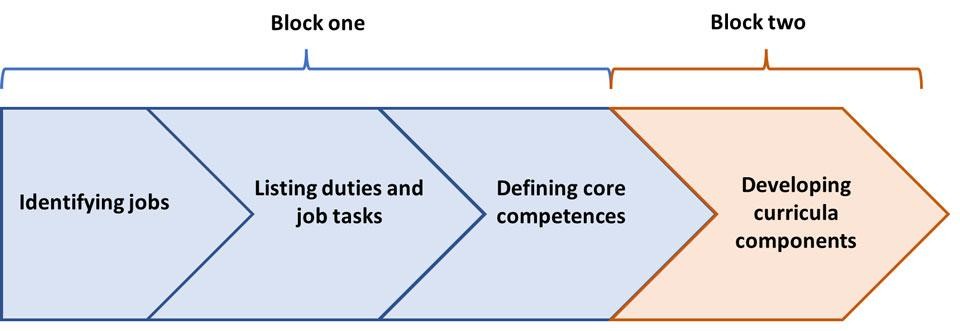
Satu Määttänen & Ulla-Maija Knuutti
Meeting the requirements of the constantly changing world of work and building sustainable societies require a variety of competences beyond content knowledge. The OECD Learning Compass (2018) presents three transformative competences: knowledge, skills, and attitudes with values that students need to perform in the 21st century. The curriculum is the most important and powerful tool to develop student competences, and it sets the framework for and guides the teachers and, subsequently, teaching approaches and methods.
The competence-based approach in curriculum design and subsequent competence-based curricula (CBC) focuses on competences required and relevant in the world of work and emphasizes skills related to doing rather than knowing (Njeng’ere & Lili, 2017). A competent student knows how and why things are done and what to do if things go wrong. They can perform a job properly and safely and can adapt to different situations. Due to the benefits of CBC, many educational institutions around the world are reviewing their curricula to be competence-based.
One concrete method of guiding curricula development and creating CBC is the DACUM method, an abbreviation for “Develop A Curriculum” (Norton, 1997, p. 1). The method, usually conducted as a few-day workshop, has been widely and successfully used to analyze the current and future professions and the skills and competences needed to perform in them (Norton, 1997, p. 2).
This article presents the process, outcomes, and reflections of a curricula workshop organized for Sub-Saharan African university teachers using the DACUM method.
Process of a DACUM workshop
A 2-day curriculum workshop was organized in November 2023 as part of the AgriSCALE project for 26 staff members from five universities in Kenya, Uganda and Zambia. The workshop aimed to learn about the CBC design process and to produce a draft curriculum. The workshop followed a modified DACUM method as described below and illustrated in Figure 1.
Development of a competence-based curriculum utilizing the DACUM method is composed of two blocks or working parts: (1) Defining the core competences that will guide the development of the curriculum and (2) building the competence-based curricula. The first block is the core part of the process. To build a competence-based curriculum, one must know what competences to develop.

At the beginning of the DACUM workshop, the participants were divided into five groups, each group representing a degree programme and thus a curriculum. The groups consisted of the following degree programmes: animal sciences, crop sciences, food science and technology, agricultural economics, and agribusiness management. The groups included members from different universities and countries.
After grouping the members, the actual work started within the groups, as explained below.
Block one: Defining the core competences:
- Listing the job titles of degree programme graduates. Each group listed the current and expected job titles that their graduates can land.
- Listing the job tasks and duties. For each job title mentioned, respective job duties and tasks were listed within the groups.
- Defining the core competences. Based on the tasks and duties listed, the groups defined the core competences needed to perform in these tasks.
Block two: Building the competence-based curricula:
- Developing the curriculum components. Deriving from tasks 1–3 (i.e. block one), the groups were assigned to design the core components of the curricula: desired competences, objectives, contents, methods/activities, assessment methods and learning and teaching aids. This will function as the framework for the curriculum creation.
Reflections from the workshop
At the end of the workshop, each group presented their outputs and was guided to reflect on what they found difficult in the DACUM process and what kind of insights they got, if any.
All the groups appreciated the method and found it useful. The process of going “backwards” from the jobs to the tasks and to the competences was especially mentioned as useful, as it allowed “systematically to reach the outcome”. Yet, few groups recognized the limitation of not having external stakeholders, such as industry representatives abroad. Discussion with the industry and other potential employers would have enabled the groups to a make more comprehensive job and task list.
Defining the tasks and competences was found difficult and even confusing at times, especially as “they were so many”. However, the structured process also enabled the groups to realize that some competences overlap across multiple jobs and that graduates need multidisciplinary and generic skills to perform well in the world of work. “Science is not just a science but competences beyond scientific literacy is needed”. This made one group wonder if the graduates they currently produce possess enough generic skills and if the curricula should indeed be transformed to include more generic skills in addition to the hard skills and content knowledge.
As workshop organizers, we acknowledge that we needed to modify the DACUM method slightly to fit into the workshop’s schedule and setting. The main difference to the ‘pure’ DACUM method was the absence of industry and other potential employer representatives. However, as DACUM is a concrete way of defining competences, we feel that the modifications did not matter for the actual outcome. The main idea of the method is not just to create a curriculum but instead to give insights and ideas for teaching, to realize the importance of providing students with various skills and competences in addition to content knowledge, and finally, to tie the education firmly to the needs of the world of work. We perceive us and the workshop participants to have succeeded in this task and subsequent outcomes.
Final words
Based on our experience, we strongly recommend using the DACUM method in various educational capacity building actions, as DACUM is a feasible and systematic method for competence-based curriculum development. Moreover, the method can be used as a tool for mindset change within educational providers and professionals, even in the absence of an actual curriculum to be developed. As demonstrated by the workshop we organized, the DACUM method enables participants to explore and reflect competences needed in the world of work and understand the importance and relevancy of developing the transformative, or generic, competences.
Authors
Satu Määttänen, M.Sc. in Agricultural Sciences and M.Sc. in Environmental Science and Policy from the University of Helsinki. She works as a Project Expert at HAMK Bio Research Unit.
Ulla-Maija Knuutti, M.Sc. in Rural Development from Häme University of Applied Sciences. She works as a Senior Lecturer at HAMK Edu Research Unit.
References
Njeng’ere, D., & Lili, J. (2017). The Why, what and how of competency-based curriculum reforms: the Kenyan experience. In-Progress Reflection No. 11 on Current and Critical Issues in Curriculum, Learning and Assessment. https://unesdoc.unesco.org/ark:/48223/pf0000250431
Norton, R. E. (1997). DACUM Handbook (Second Ed.). Center on Education and Training for Employment,The Ohio State University.
OECD. (2018). The OECD Learning Compass 2030. OECD Future of Education and Skills 2030. https://www.oecd.org/education/2030-project/teaching-and-learning/learning/





